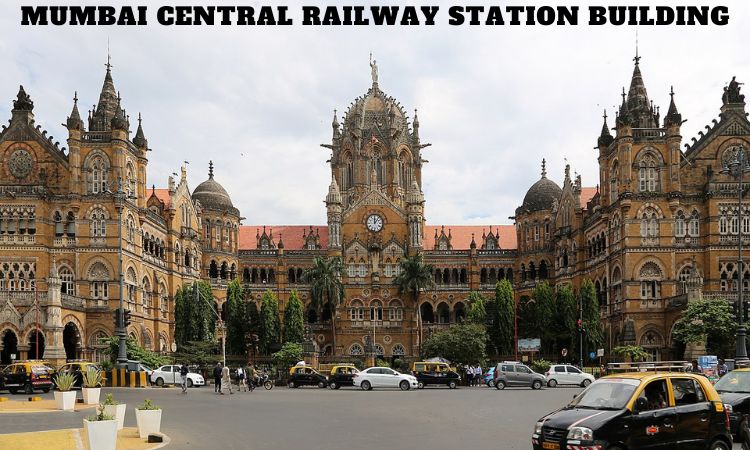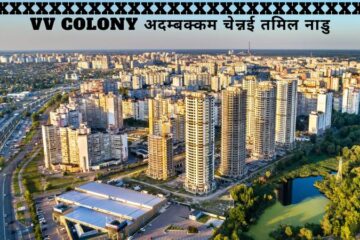
Mumbai Central Railway Station Building, an architectural gem and bustling transport nexus, stands as a testament to Mumbai’s colonial past and its enduring spirit as India’s financial capital. Opened in 1930, this Grade I heritage structure seamlessly blends Art Deco grandeur with functional design, serving millions of commuters while captivating historians and architects alike. From its iconic clock tower to its role in Bollywood cinema, Mumbai Central is more than a transit point—it is a cultural landmark embodying the city’s relentless energy and historical layers.
Historical Background: Colonial Ambitions and Urban Growth
The Need for a New Terminal
By the early 20th century, Bombay (now Mumbai) had emerged as a critical port and commercial hub under British rule. The existing railway infrastructure, including the Victoria Terminus (now Chhatrapati Shivaji Maharaj Terminus), struggled to accommodate growing traffic. The Bombay, Baroda, and Central India Railway (BB&CI) commissioned Mumbai Central to decentralize rail operations and cater to the western suburbs’ expansion.
Construction and Inauguration
Designed by British architect Claude Batley, a pioneer of Indo-Deco architecture, the station was completed in 1930 after three years of construction. Its original name, “Bombay Central,” reflected the city’s colonial identity until it was renamed in 1996 following Mumbai’s official rebranding. The station’s strategic location near the business district of Tardeo and its proximity to the Arabian Sea underscored its role in connecting commercial and residential zones.
Architectural Vision
Batley’s design prioritized both aesthetics and efficiency. Unlike the Gothic Revival style of Victoria Terminus, Mumbai Central embraced the emerging Art Deco movement, characterized by sleek lines, geometric patterns, and minimalist elegance. The station’s layout incorporated wide platforms, ample ventilation, and streamlined ticketing areas, addressing the practical needs of a rapidly modernizing city.
Architectural Splendor: Art Deco Meets Functionality
Exterior Design: Symmetry and Grandeur
The station’s facade is a masterclass in Art Deco aesthetics. A central clock tower, flanked by symmetrical wings, anchors the structure. The use of cream-colored Gwalior stone exudes warmth, while horizontal bands, curved balconies, and recessed windows create rhythmic visual harmony. The towering clock, visible from distant points, became a symbolic reference for locals and travelers.
Interior Spaces: Light and Movement
Inside, the station balances grandeur with practicality. High ceilings with exposed steel trusses and skylights flood the concourse with natural light. Terrazzo floors, polished teakwood counters, and brass fittings reflect the era’s craftsmanship. Batley’s design minimized clutter, ensuring smooth passenger flow—a principle still relevant today.
Art Deco in Mumbai’s Landscape
Mumbai Central is part of the city’s UNESCO-recognized Art Deco precinct, which includes landmarks like the Eros Cinema and Marine Drive. Its design shares motifs with global Deco trends but incorporates local elements, such as jaali (lattice) work and tropical climate adaptations, making it a unique fusion of East and West.
The Lifeline of Mumbai: Transport Hub and Daily Rhythms
Connectivity and Operations
As the Western Railway’s flagship terminal, Mumbai Central handles over 200 suburban services and numerous long-distance trains, including the Rajdhani Express to Delhi. Its 12 platforms cater to 300,000 daily commuters, underscoring its role in Mumbai’s suburban network—the lifeline of the city.
Integration with Urban Transport
The station’s proximity to BEST bus stops, taxi stands, and the upcoming Metro lines exemplifies its multimodal importance. The nearby Mumbai Central Terminus for long-distance buses further solidifies its status as a transit nexus.
Economic and Social Impact
From office-goers to migrant workers, the station witnesses Mumbai’s socio-economic diversity. The adjoining areas, dotted with budget hotels and eateries, thrive on the station’s footfall, illustrating its role in sustaining local economies.
Cultural Icon: From Silver Screens to Collective Memory
Bollywood and Beyond
Mumbai Central’s cinematic allure has featured in films like Slumdog Millionaire and Bombay Velvet. Its platforms and facade often symbolize journeys, reunions, and the city’s relentless pace, resonating with audiences nationwide.
Literary and Artistic Muse
Writers and photographers have long been drawn to its atmospheric blend of chaos and beauty. The station’s daily drama—vendors hawking chai, commuters sprinting for trains—epitomizes Mumbai’s “spirit of survival.”
Preservation Challenges: Balancing Heritage and Modernity
Heritage Status and Conservation Efforts
Declared a Grade I heritage structure in 1995, the station faces preservation challenges due to pollution, overcrowding, and wear. Recent initiatives include restoring the facade’s original stonework and upgrading signage to reflect Art Deco typography.
Infrastructure Upgrades
While introducing modern amenities like digital boards and CCTV, authorities strive to retain heritage elements. The delicate task involves reinforcing structures without compromising aesthetic integrity.
The Future: Embracing Change While Honoring Legacy
Modernization Projects
Plans for elevated tracks, expanded concourses, and eco-friendly features aim to enhance capacity. The integration of the Mumbai Metro seeks to reduce suburban rail congestion.
Sustainable Heritage Tourism
Proposals to develop heritage walks and interactive exhibits could transform the station into a living museum, educating visitors about its architectural and historical significance.
Conclusion
Mumbai Central Railway Station Building is where history, architecture, and daily life converge. As it approaches a century of service, it remains a beacon of Mumbai’s resilience and adaptability—a heritage landmark not frozen in time but evolving with the city it serves. Its story is a reminder that progress and preservation can coexist, ensuring future generations inherit both functional infrastructure and cultural legacy.
This structured yet engaging exploration of Mumbai Central Railway Station highlights its multifaceted role in Mumbai’s past, present, and future, offering readers a comprehensive understanding of its enduring significance.
Frequently Asked Questions (FAQs)
1. When was Mumbai Central Railway Station built?
Ans. Mumbai Central was inaugurated on December 18, 1930.
2. Who designed the Mumbai Central Railway Station building?
Ans. The station was designed by British architect Claude Batley.
3. What is the architectural style of the Mumbai Central Railway Station building?
Ans. The building showcases a blend of Indo-Saracenic and Victorian Gothic styles.
4. How many platforms does Mumbai Central have?
Ans. Mumbai Central has a total of 10 platforms.
5. What facilities are available at Mumbai Central Railway Station?
Ans. The station offers a wide range of facilities, including:
- Waiting rooms
- Food stalls and restaurants
- Bookstalls
- Restrooms
- ATMs
- Wi-Fi
- Cloakroom
- Passenger information systems
- Help desks
6. Is there a parking facility at Mumbai Central?
Ans. Yes, Mumbai Central has a parking facility for vehicles.
7. How can I reach Mumbai Central Railway Station?
Ans. Mumbai Central is well-connected by local trains, buses, taxis, and auto-rickshaws.
8. What is the station code for Mumbai Central?
Ans. The station code for Mumbai Central is MMCT.
9. Are there any historical elements within the Mumbai Central Railway Station building?
Ans. Yes, the station houses a heritage gallery showcasing the history of the station and Indian Railways.
10. Does Mumbai Central have facilities for disabled passengers?
Ans. Yes, the station is equipped with ramps, elevators, and accessible restrooms to cater to the needs of disabled passengers.


